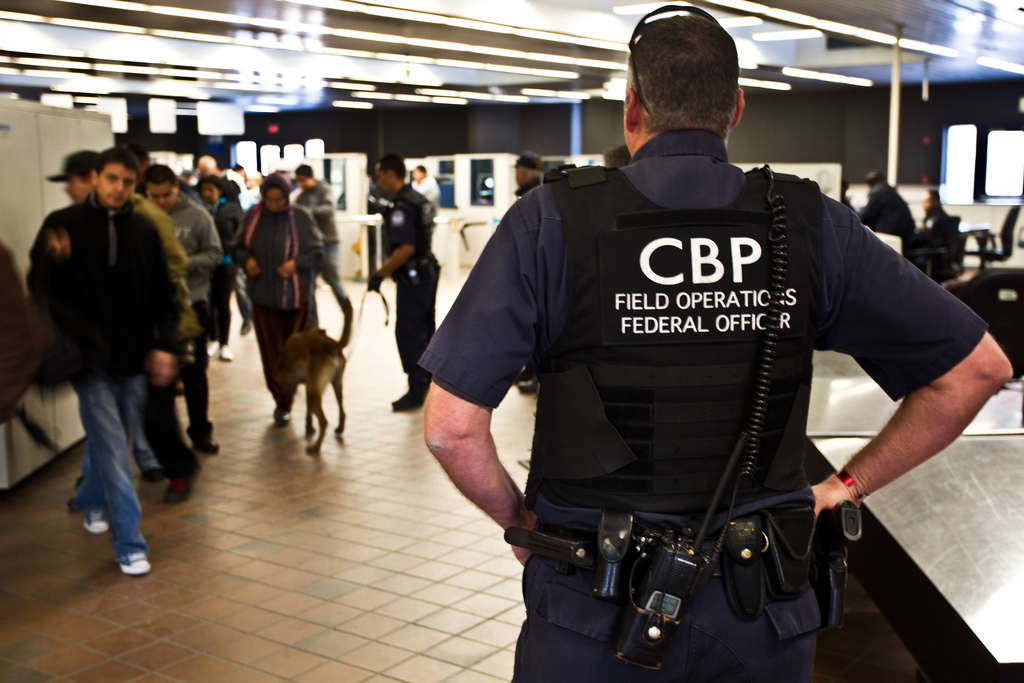The watchdog report reviewed the various layers of security screening that foreign passengers are subjected to before ever boarding a airplane to the United States. In 2015 alone, CBP identified and interdicted more than 22,000 high-risk air travelers through their predeparture programs. Officers stationed in more than a dozen countries filtered through the approximately 16 million air passengers seeking entry to the United States and deemed 10,648 travelers inadmissible.
The numbers are astonishing. As CBP looks to expand those programs that have already netted thousands of possible security threats, the Government Accountable Office had just one concern. CBP has data on the number of security threats they have interdicted, but how can they evaluate the overall effectiveness of the program? It’s the perennial question of national security: How can you tell how many threats you missed?
It is an enviable position for any agency to be in if a government watchdog only criticizes you because you can’t measure your success.
According to David Heyman, former Assistant Secretary of Policy at DHS, said the GAO assessment was a “glowing report” that detailed the vast amount of security that American homeland security and intelligence personnel have implemented in the post-9/11 era.
“Irrespective of how you measure success, we interdicted 22,000 people in 2015, about 60 people were turned away every day before they even got on a plane. The fact that we are able to do that is an indication of success,” Heyman said.
Right now there are more than 670 CBP officers at 29 locations overseas. They manage multiple predeparture programs screening at least 100 million air travelers destined for the United States every year. In an era where President Donald Trump has called for “extreme vetting” of individuals seeking to travel to the country, it’s worthwhile to review those programs.
The preclearance program run by CBP personnel is operational at 15 airports in six countries, Canada, Aruba, Bermuda, the Bahamas, Ireland, and the United Arab Emirates. At those locations, passengers are subject to the equivalent security and travel screening as they experience going through customs upon arrival in the United States.
The Immigration Advisory Program (IAP) was introduced by DHS in 2004. Unarmed CBP officers are posted at foreign airports and partner with air carriers and host country governments to interview and vet individuals in order to prevent terrorists and other high-risk individuals from boarding U.S.-bound flights.
The Joint Security Program (JSP) was initiated in 2009 to build on IAP and form close partnerships between CBP officers and host country law enforcement. Both the IAP and JSP programs function as information and threat sharing programs.
Homeland security has come a long way over the last 10 to 15 years. It starts miles away and long before a bad actor can even buy a boarding pass. It starts by screening visa requests (or approving ESTAs for travelers coming from visa waiver countries), then obtaining all the relevant passenger information, the passenger name record, predeparture information, all of which is scrubbed by DHS personnel and put through about a dozen different databases.
“Call it extreme or not, there is a very vigorous vetting process that goes on,” Heyman emphasized.
In nations that partner with CBP in these vetting programs, by the time an individual takes off for the United States, their information has gone through enhanced information sharing and intelligence sharing with international partners, advanced data sharing with the airlines, a check has been run on the passenger name record through the U.S. terrorist watchlist and other watchlists, Heyman explained.
“Then they are looking at things, like admissibility requirements that are above and beyond whether you are a terrorist,” he said, adding the entire process is “extraordinarily impressive.”
Despite the apparent effectiveness of CBP’s predeparture programs, it only covers a small portion of countries that regularly gain easy travel access to the United States through the visa waiver program. Under the program, an individual from 38 participating nations can enter the United States for 90 days without obtaining a visa. They can apply for an ESTA, but that only determines the visitors eligibility, not whether or not they are admissible. The visa waiver lets a traveler skip the more rigorous interviewing process with U.S. embassy personnel that determines the legitimacy of the travel request.
This gap in the CBP programs is a concern for Jessica Vaughan, director of policy studies at the Center for Immigration Studies. If 22,000 potential security risks were blocked under the pre-screening programs operational in only a handful of countries, there could be many more individuals who are getting through.
The number of individuals interdicted using the predeparture programs, demonstrates the value of the program, Vaughan said. “It also suggests that if preclearance were expanded we would probably find a lot more high-risk travelers trying to come to the United States. And if this is proven to be an effective security tool, we ought to consider making it a requirement in countries that are allowed to participate in the visa waiver program.”
Before leaving office, former DHS Secretary Jeh Johnson insisted on a timetable to expand the CBP programs to 33 percent of all airport locations that serve as final points of entry by 2024. In May 2015, DHS announced plans to expand preclearance to ten airports in nine additional countries. The negotiations to expand the program were underway when Trump took office, so it remains to be seen whether the new administration could seek to fast-track the process, or even further expand the preclearance program after thorough review.
Asked about having the preclearance program in every airport with direct flights to the U.S., Heyman explained, “It’s not at all crazy to want to have that in every airport. The question is a matter of resources and relationships.”
In order to have the type of screening in place at the 14 locations with preclearance, and IAP and JSP officers, the United States has to already have a relationship with the host country that facilitates extensive information sharing and intelligence sharing about the individuals who could be trying to travel to the United States.
“The gold standard of information sharing is what they do in the visa waiver program,” Heyman explained. With those 38 visa waiver countries, U.S. authorities are able to work with their counterparts who provide law enforcement information, incidents of lost and stolen passports, and updates to the terrorist watchlist and other databases.
In light of the threat of foreign terrorist fighters, thousands of which possess passports to nations that participate in the visa waiver program, U.S. officials have become increasingly wary of its effectiveness. Many of the visa waiver countries are in Europe, which was routinely criticized after a rash of deadly terror attacks for having ineffective counter-terrorism programs and poor information sharing among member states. Those problems were seen by some in the United States as weak links in the chain, especially when poor information sharing impacted the databases U.S. authorities rely on for intelligence.
According to media reports, President Trump is now considering an executive order that could temporarily suspend the visa waiver program among the 38 participating states.
“You are only only as good as the information and intelligence you have,” Heyman noted. In many cases, he said, the programs in place, including the visa waiver program, are effective. Often when an individual who is not authorized to be in the United States gets past the layers of security, “it’s largely not because of the vetting process or the actual procedures,” Heyman explained. “It’s that the information or the intelligence wasn’t integrated into the program in a timely way or an appropriate way.”
The new leadership of the Department of Homeland Security and Customs and Border Control (when the new CPB commissioner is officially selected) will thoroughly review the existing policies to determine where improvements can be made and where the system is working as it should. They will also be charged with implementing Trump’s political priorities, which he clearly laid out on the campaign trail.
Theresa Cardinal Brown is an immigration specialist at the Bipartisan Policy Center who served as a policy advisor to the Customs and Border Protection commissioner in the mid-2000’s. She noted that President Trump and his new Homeland Security Secretary, Gen. John Kelly will have to focus on putting in place the most effective policies.
“Trump has talked about extreme vetting,” Brown said. “The question to the Trump administration is to take a look at what they are doing already. What more is it they could or should be doing and how could that actually be done?”
Among the recommendations Trump has made is an ideological test upon entry to the United States. “Sometimes a lot of whats said in political rhetoric is not easily translatable to doing it on the ground, and this may be one of those areas,” Brown said. “CBP officers have maybe a couple minutes to see somebody on arrival, so are they really going to figure out whether they’re in agreement with American values? It’s sort of hard to figure out how you would operationalize that.”
On Wednesday, President Donald Trump clearly outlined its priorities of continuing to improve border security in a speech at the Department of Homeland Security.
“You do a great job, but you need help, you need more,” Trump said of America’s immigration officers. “Beginning today, the United States gets control of its borders.”
Given CBP’s success when it comes to air travel programs, it will be interesting to see how their mission is supported or further integrated into the Trump’s border control strategy.






